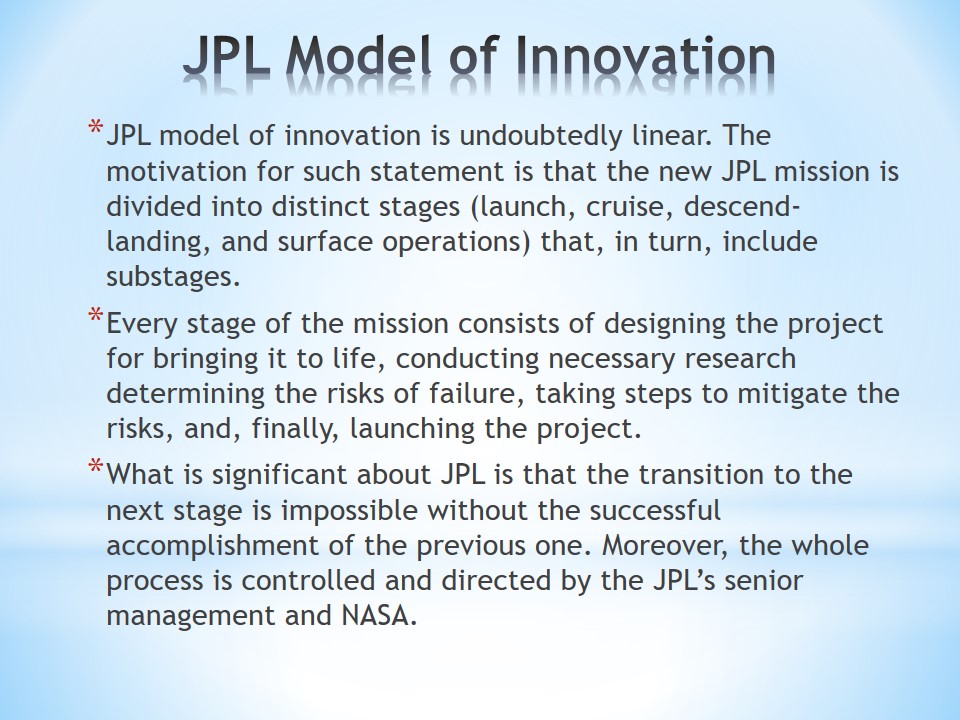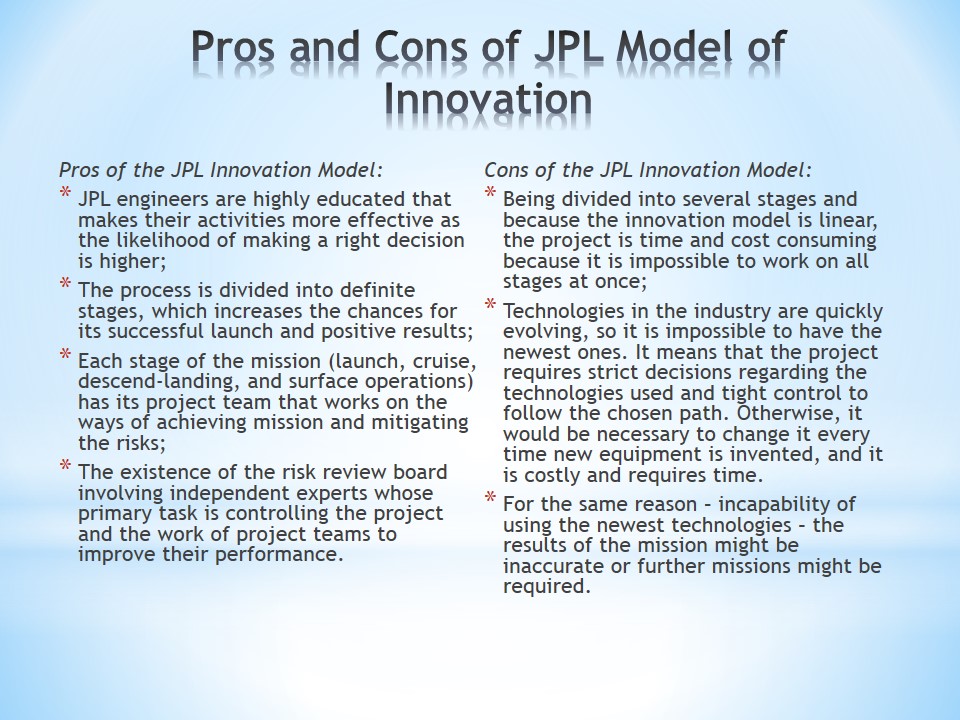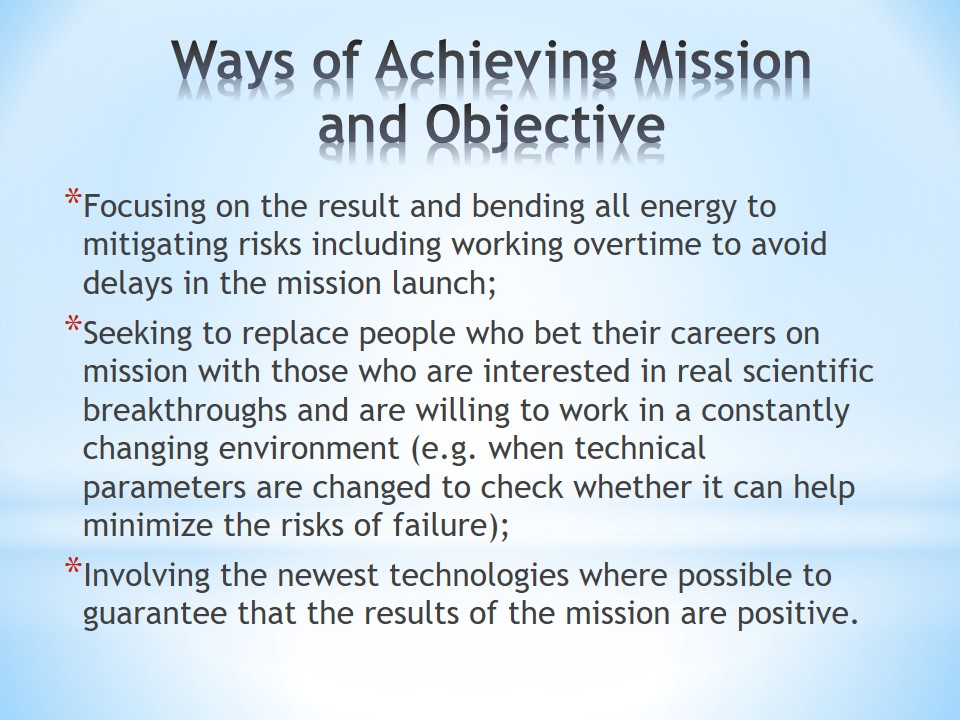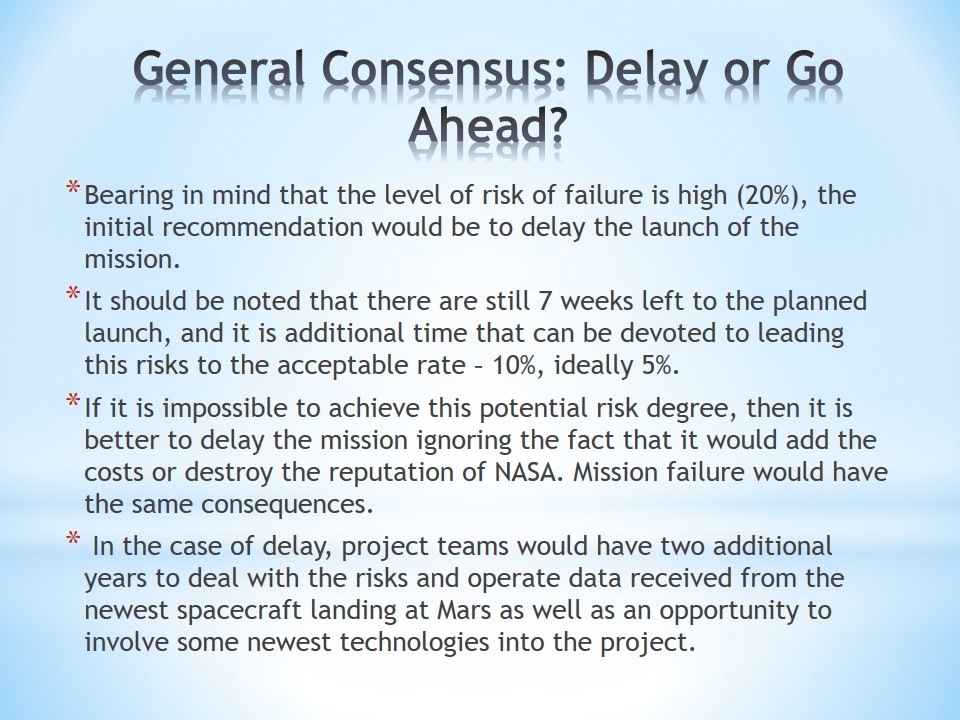JPL model of innovation is undoubtedly linear. The motivation for such statement is that the new JPL mission is divided into distinct stages (launch, cruise, descend-landing, and surface operations) that, in turn, include substages.
Every stage of the mission consists of designing the project for bringing it to life, conducting necessary research determining the risks of failure, taking steps to mitigate the risks, and, finally, launching the project.
What is significant about JPL is that the transition to the next stage is impossible without the successful accomplishment of the previous one. Moreover, the whole process is controlled and directed by the JPL’s senior management and NASA.

Pros and Cons of JPL Model of Innovation
- Pros of the JPL Innovation Model:
- JPL engineers are highly educated that makes their activities more effective as the likelihood of making a right decision is higher;
- The process is divided into definite stages, which increases the chances for its successful launch and positive results;
- Each stage of the mission (launch, cruise, descend-landing, and surface operations) has its project team that works on the ways of achieving mission and mitigating the risks;
- The existence of the risk review board involving independent experts whose primary task is controlling the project and the work of project teams to improve their performance.
- Cons of the JPL Innovation Model:
- Being divided into several stages and because the innovation model is linear, the project is time and cost consuming because it is impossible to work on all stages at once;
- Technologies in the industry are quickly evolving, so it is impossible to have the newest ones. It means that the project requires strict decisions regarding the technologies used and tight control to follow the chosen path. Otherwise, it would be necessary to change it every time new equipment is invented, and it is costly and requires time.
- For the same reason – incapability of using the newest technologies – the results of the mission might be inaccurate or further missions might be required.

Ways of Achieving Mission and Objective
Focusing on the result and bending all energy to mitigating risks including working overtime to avoid delays in the mission launch;
Seeking to replace people who bet their careers on mission with those who are interested in real scientific breakthroughs and are willing to work in a constantly changing environment (e.g. when technical parameters are changed to check whether it can help minimize the risks of failure);
Involving the newest technologies where possible to guarantee that the results of the mission are positive.

General Consensus: Delay or Go Ahead?
Bearing in mind that the level of risk of failure is high (20%), the initial recommendation would be to delay the launch of the mission.
It should be noted that there are still 7 weeks left to the planned launch, and it is additional time that can be devoted to leading this risks to the acceptable rate – 10%, ideally 5%.
If it is impossible to achieve this potential risk degree, then it is better to delay the mission ignoring the fact that it would add the costs or destroy the reputation of NASA. Mission failure would have the same consequences.
In the case of delay, project teams would have two additional years to deal with the risks and operate data received from the newest spacecraft landing at Mars as well as an opportunity to involve some newest technologies into the project.
